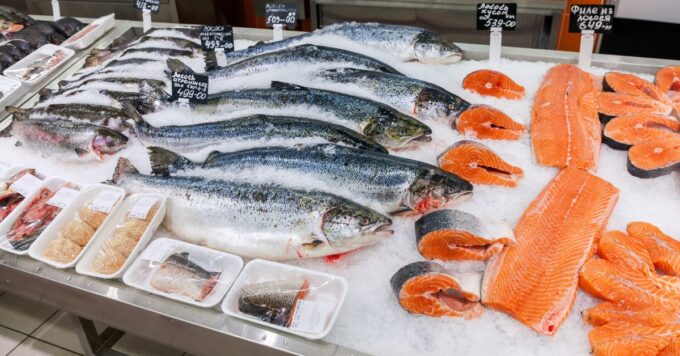
When it comes to seafood, fresh, high-quality products elevate your dishes, whether you’re preparing Shrimp Scampi or a classic Lobster Bisque. However, knowing how to select the best catch at the market ensures that every meal is a culinary delight. Use these simple tips to spot the best seafood at the market and bring home ingredients that shine.
Select the Right Location
The quality starts with where you shop. Specialty fish markets often source high-grade seafood directly from local fisheries or trusted suppliers, ensuring freshness and superior quality.
High-quality neighborhood markets with a dedicated seafood section can also be excellent choices, especially if they maintain consistently cold displays and properly labeled products, which signify a store that truly values freshness.
Check the Smell
Fresh seafood typically has a clean, salty aroma that is reminiscent of the ocean breeze, indicating its freshness and quality. Be cautious of any ammonia-like or overly fishy odor, as these are common signs of spoilage and can pose health risks. When in doubt, don’t hesitate to ask the staff if you can smell the product more closely before making a purchase, ensuring you select the freshest options available.
Feel the Texture
High-quality fish feels firm and resilient to the touch. For fillets or steaks, gently press the flesh with your finger; it should spring back quickly, indicating freshness.
This applies to various seafoods such as shrimp, scallops, and clams—fresh specimens should be plump and firm, not slimy or mushy. Try to steer clear of seafood that has a slimy coating, a strong fishy or ammonia smell, or a soft, mushy texture. These are often signs that the seafood is no longer fresh or has gone bad.
Inspect the Eyes and Gills of Whole Fish
When selecting whole fish, examine the eyes and gills carefully to ensure they are healthy and intact. Fresh fish typically have bright, clear eyes that are slightly bulging, indicating good quality. The gills should be a vibrant red or pink, moist, and free from sliminess.
Avoid fish with cloudy, sunken eyes or dull, brownish gills, as these indicate aging or spoilage. Also, the skin should be shiny and firm, and the flesh should spring back when pressed.
Judge the Color and Appearance
Fresh seafood should appear vibrant and natural in color, indicating freshness. Shellfish, such as shrimp, should have firm shells that are free from discoloration or spots, and the shells should close tightly when touched. Dull colors, cracks on shells, or dried-out meat are red flags, signaling that the seafood may not be fresh or of the best quality.
Consider Frozen Options
Sometimes frozen seafood is better than fresh. High-quality options are flash-frozen shortly after harvesting, which locks in flavor and nutrients while extending shelf life. Look for vacuum-sealed packaging to prevent freezer burn. Frozen seafood often matches the quality of fresh, particularly if you’re far from the coast.
Ask About the Source
Never hesitate to ask questions. A reputable seafood purveyor can inform you about the origin of their products and when they were caught. Knowing the origin helps ensure you’re buying sustainable and traceable seafood.
Selecting top-tier seafood at the market enhances the flavors of your favorite seafood dishes, such as poke or grilled shrimp, and promotes responsible fishing practices. Next time you visit the market, follow these tips to make smarter choices and craft impressive meals at home.